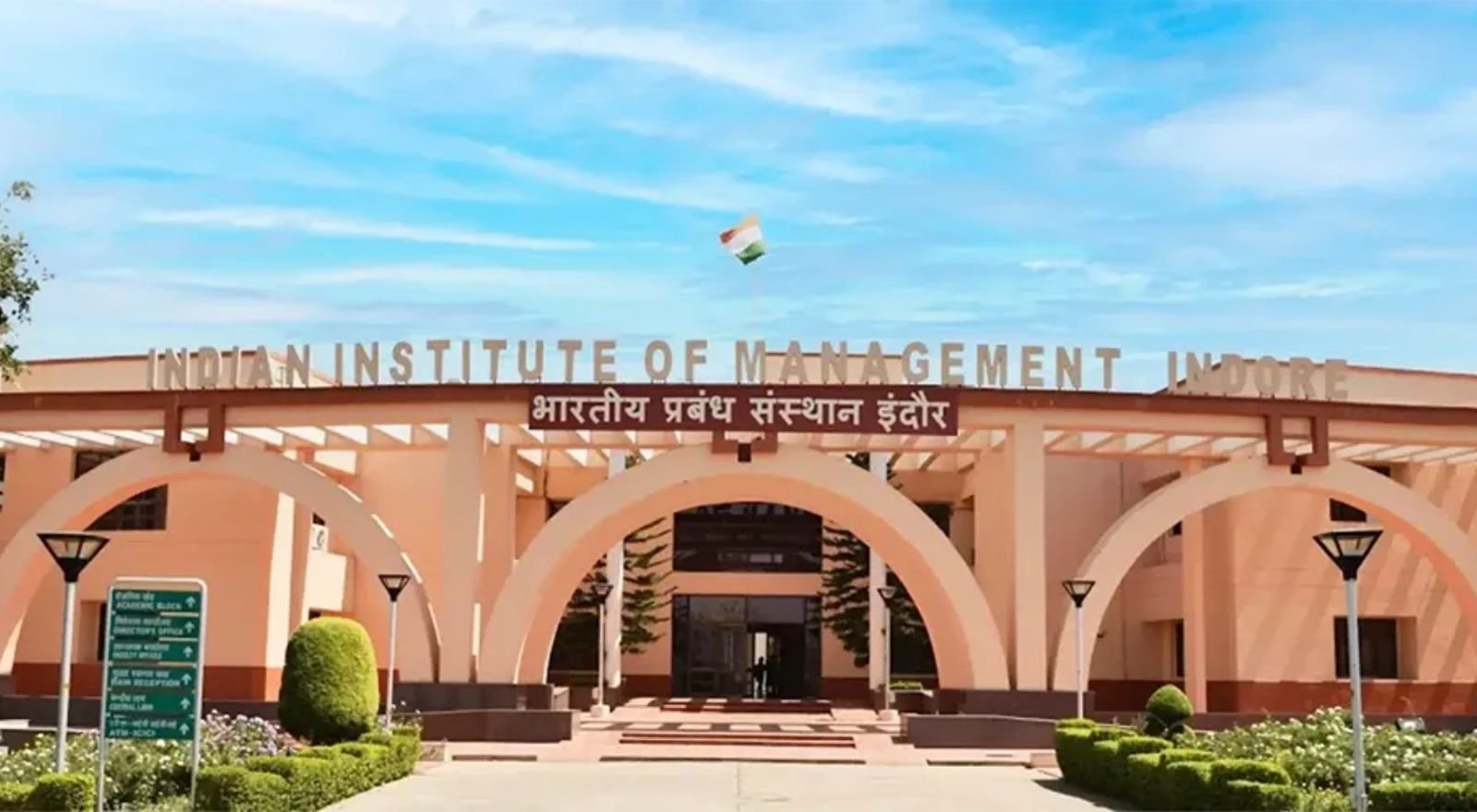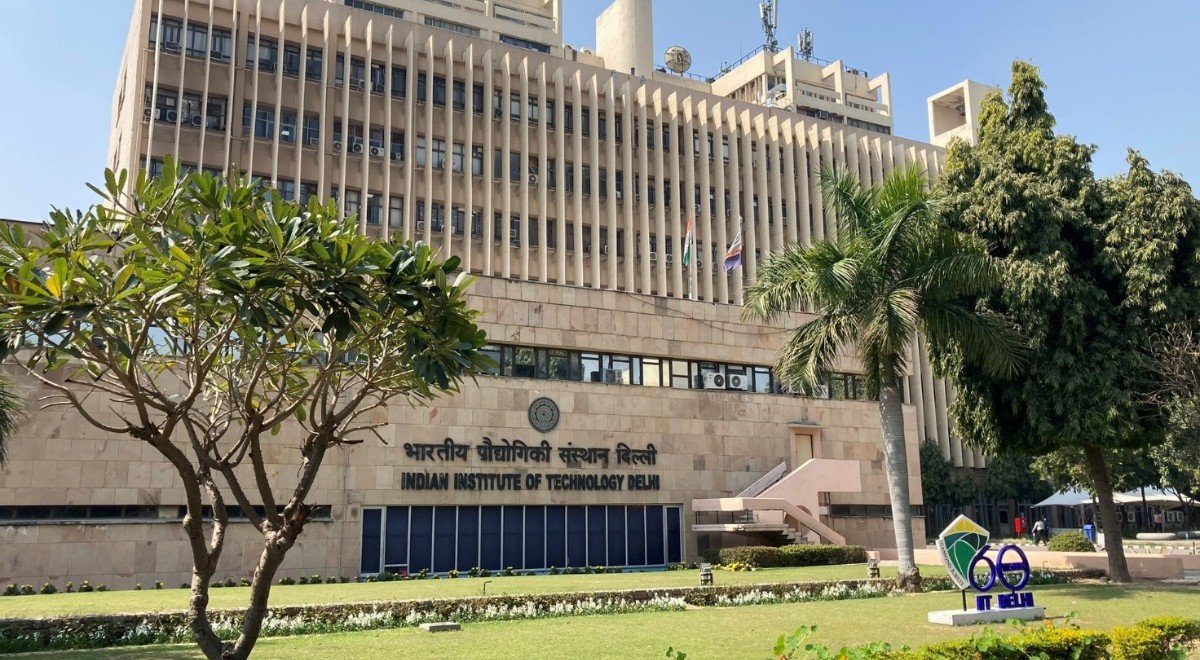Table of Contents
JEE Main Paper Analysis: JEE Mains
This page contains an analysis of the JEE Main 2023 paper that was administered during the January session. The level of difficulty of the JEE Main 2023 paper was considered to be moderate by both the professionals who evaluated it and the students who took it. While the sections on mathematics and physics were somewhat easy to easy, the segment on chemistry was rather easy. Students felt that the question paper was balanced in terms of the amount of time spent on each chapter, despite the fact that it covered practically all of the CBSE Board’s Class XI and XII material. According to the pupils, the test was much simpler compared to the previous year’s version. The comprehensive JEE Main 2023 exam analysis has also been released by a number of different coaching institutes.
Students benefit from conducting a JEE Main today paper analysis since it informs them of the difficulty level of the questions and the themes that have the most weightage. The JEE Main paper analysis 2023 will be based on the students who are currently registered to take the examination.
The first session of the JEE Main 2023 examination was held on January 24, 25, 28, 29, 30, and 31 of this year. Candidates will be able to have a better understanding of the difficulty level of the exam, topics with weightage, and a variety of other features of the paper by consulting the JEE Main 2023 analysis. The JEE Main paper analysis 2023 will be presented after receiving comments from students who will be taking the exam as well as from individuals who are knowledgeable in the field of coaching.
JEE Main Paper Analysis on the JEE Main Exam 2023 Paper
Candidates will be presented to you in this section. The JEE Main paper analysis 2023 is presented below for each day of the examination session.
JEE Main Paper Analysis of the JEE Main paper for the first shift on February 1, 2023
Mathematics: Easy to Moderately Difficult
Physics: Easy to Moderately Difficult
Chemistry: Easy
JEE Main Paper Analysis of the Second Shift of the JEE Main Exam on February 1, 2023
Mathematics: Very Difficult
Physics: Moderate
Chemistry: Very Easy
JEE Main on the 31st of January 2023: JEE Main Paper Analysis of the Paper for the Second Shift by FIITJEE
The FIITJEE specialists said that the difficulty level of the mathematics section was moderate, the difficulty level of the chemistry section was easy to moderate, and the difficulty level of the physics section was easy.
Mathematics is an Averagely Challenging Subject. Chapters on algebra and coordinate geometry were given more importance than other topics. Circles, hyperbolas, definite integrals, limits, differential equations, matrices, the binomial theorem, probability, statistics, permutation and combination, determinants, vectors, three-dimensional geometry, complex numbers, and progression series were some of the topics on which questions were based. Calculations were required to be made in great detail for both the MCQs and the numerically based problems. According to the pupils, this was a particularly lengthy and challenging segment.
Physics: A Piece of Cake Chapters on Kinematics, Circular Motion, the Laws of Motion, Gravitation, Heat and Thermodynamics, Wave Optics, Current Electricity, Electrostatics, AC Circuits, Modern Physics, Communication Systems, and Semi-Conductors were given more importance than other topics. It was said that the questions focused on numbers were not difficult. The overall tone of this section was neutral.
Chemistry might range from Very Easy to Moderate. In comparison to organic and inorganic chemistry, the importance placed on physical chemistry was far lower. The D and F Block elements, Ores and Metallurgy, Environmental Chemistry, Chemistry in Everyday Life, Biomolecules, Aldehydes and Ketones, Amines, Ethers and Phenols, Aryl and Alkyl Halides, Chemical Equilibrium, Atomic Structure, Solutions, and Chemical Kinetics were the topics that were covered in the questions. Compared to the numerical section, the multiple-choice questions were challenging.
FIITJEE’s JEE Main Paper Analysis of the JEE Main Shift 1 Paper from the 31st of January 2023
According to the FIITJEE analysts, the difficulty level of the JEE Main Shift 1 exam on the 31st of January 2023 was about average.
Mathematics at a Difficulty Level That’s Just Right Chapters on algebra and coordinate geometry were given more importance than other topics. The topics of parabolas, ellipses, definite integrals, areas, matrices, probabilities, statistics, permutations and combinations, determinants, vectors, three-dimensional geometry, complex numbers, and progression series were among those on which questions were based. Calculations were required to be made in great detail for both the MCQs and the numerically based problems. Several students commented that this was a difficult and drawn-out segment.
Physics at an easy difficulty level Chapters on Kinematics, Rotational Motion, SHM & Waves, Gravitation, Heat & Thermodynamics, Wave Optics, Current Electricity, Electrostatics, AC Circuits, Modern Physics, Communication Systems, and Semi-Conductors were given more importance than other topics in the textbook. It was said that the questions focused on numbers were not difficult. The overall tone of this section was neutral.
Chemistry, at a Moderately Advanced Level In comparison to organic and inorganic chemistry, the importance placed on physical chemistry was far lower. In the context of qualitative analysis, questions were asked. the d and f blocks of elements, quantitative analysis of compounds, environmental chemistry, chemistry in everyday life, biomolecules, hydrocarbons, amines, ethers and phenols, aryl and alkyl halides, chemical equilibrium, atomic structure, solutions, electrochemistry, and chemical kinetics. Compared to the numerical section, the multiple-choice questions were challenging.
JEE Main 31 January 2023 Shift 1 Paper Analysis
Mathematics – Moderately Tough
Physics – Easy
Chemistry – Moderate
JEE Main 30 January 2023 Shift 2 Paper Analysis by FIITJEE
JEE Main 2023 30 January Shift 2 was rated as having difficulty that was higher than moderate, according to the experts of FIITJEE. The difficulty level of the math class was about average, while the physics class was about average, and the chemistry class ranged from easy to moderate.
Mathematics at a Difficult to Very Difficult level. Chapters on algebra and coordinate geometry were given more importance than other topics. The following topics were covered in the exam: parabolas, ellipses, definite integrals, areas, differential equations, matrices, probability, determinants, vectors, three-dimensional geometry, the binomial theorem, complex numbers, and progression series. Calculations were required to be made in great detail for both the MCQs and the numerically based problems. Several students commented that this was a difficult and drawn-out segment.
Physics at a moderately advanced level Chapters on Kinematics, Laws of Motion, Heat and Thermodynamics, SHM & Waves, Current Electricity, Electrostatics, AC Circuits, Modern Physics, Semi-Conductors, and Magnetism were given more importance than other topics in the course. It was reported that the questions focused on numbers were simple. This section was fair, however, it contained a lot of challenging questions.
The difficulty of Chemistry ranges from Very Easy to Moderate. When compared to Physical Chemistry, Inorganic and Organic Chemistry had a greater number of topics. In the study of organic chemistry, alcohols, ethers, and phenols, as well as aryl and alkyl halides, are all given due consideration. Ionic Equilibrium, the Mole Concept, Electrochemistry, and Chemical Kinetics are some of the topics covered in this chapter. Questions from Chemistry in Everyday Life, Environmental Chemistry, Chemical Bonding, and Metallurgy were included in the Inorganic Chemistry exam.
JEE Main 30 January 2023 Shift 1 Paper Analysis
Candidates can check the subject-wise paper analysis of JEE Main on 30 January 2023.
Physics: Moderate to tough
Chemistry: Difficult
Maths: Easy to moderate
JEE Main 29 January 2023 Shift 2 Paper Analysis by FIITJEE
The opinion of the specialists was that the paper was average. The difficulty of mathematics was about average, whereas that of physics and chemistry ranged from easy to moderate.
Mathematics at a Moderately Advanced Level The chapters on algebra and calculus were given a certain amount of importance. The following topics were covered in the exam: parabolas, ellipses, definite integrals, areas, differential equations, matrices, probability, determinants, vectors, three-dimensional geometry, the binomial theorem, complex numbers, and progression series. Calculations were required to be made in great detail for both the MCQs and the numerically based problems. Several students commented that this was a difficult and drawn-out segment.
The level of difficulty for physics is easy to moderate. Chapters on Kinematics, Laws of Motion, Heat and Thermodynamics, SHM & Waves, Current Electricity, Electrostatics, AC Circuits, Modern Physics, Semi-Conductors, and Magnetism were given more importance than other topics in the course. It was reported that the questions focused on numbers were simple. This section was fair, however, it contained a lot of challenging questions.
Levels range from Simple to Moderate in Chemistry. In comparison to organic and inorganic chemistry, the numerical section placed a greater emphasis on physical chemistry as a subject area of study. In the field of organic chemistry, ethers, alcohols, and phenols, as well as aryl and alkyl halides, are all given due consideration. Ionic Equilibrium, the Mole Concept, Electrochemistry, and Chemical Kinetics are some of the topics covered in this chapter. Questions from s-block, p-block, Chemical Bonding, and Metallurgy were included in the inorganic chemistry exam.
JEE Main 29 January 2023 Shift 1 Paper Analysis by FIITJEE
Physics – Easy. The section was balanced.
Mathematics – Moderately Tough. Few questions in MCQs were reported as lengthy and tricky.
Chemistry – Easy to Moderate. Inorganic and Organic Chemistry had a higher weightage.
The analysts at FIITJEE have predicted that the JEE Main exam would be held on January 29, 2023. The first shift was a little bit challenging. The level of difficulty for Mathematics was around average, and Physics was the least challenging of the three topics.
Mathematics is an Averagely Challenging Subject. Questions were drawn from the entirety of the book, with a particular focus on the sections on algebra and conic sections. Straight Lines, Circles, Hyperbola, Binomial Theorem, Complex Numbers, Statistics, Mathematical Reasoning, Probability, Matrices, Progressions, 3D Geometry, Definite Integrals, Area under Curves, and Differential Equations all had some nice questions posed about them. It was claimed that only a few of the MCQ questions were lengthy and challenging.
Physics is a breeze. Kinematics, friction, the laws of motion, heat and thermodynamics, electrostatics, magnetism, alternating current circuits, current electricity, surface tension, gravitation, rotational motion, friction, and wave optics, as well as semiconductors and communication systems, were all covered in the exam. There were not many questions based on numbers that were simple. According to the students’ perceptions, this portion was well-balanced overall.
Chemistry is rated as Moderately Easy. There was a greater emphasis placed on both inorganic and organic chemistry. The majority of the problems with a numerical basis were based on physical chemistry topics such as electrochemistry, the mole concept, and ionic equilibrium. Chemistry in Everyday Life, Environmental Chemistry, Coordination Compounds, Aldehydes and Ketones, Hydrocarbons, Biomolecules, Chemical Bonding, Solutions, and Atomic Structure were some of the topics that were addressed in the test’s questions. Questions based on facts from the NCERT were quite simple.
JEE Main 28 January 2023 (BArch/BPlan) Paper Analysis
According to the students who attempted the exam, the paper was easy to moderate. However, only two drawing questions were given and there was no choice. Usually, 4 questions are given every year. The paper was lengthy this year.
Aptitude section: Paper Folding – 2 Questions, Orthographic Projection, Mirror Image – 3 Questions, Series Completion – 4 Questions
General Aptitude: Match the following on Monuments, A question related to Patronous Tower
Mathematics: Series, Determinants, 3D, Limits, Circle, Hyperbola
JEE Main 25 January 2023 Shift 2 Paper Analysis by FIITJEE
According to the FIITJEE experts, JEE Main 25 January 2023 Shift 2 paper was of medium difficulty. Mathematics was moderate, Chemistry was easy to Moderate, and Physics was reported to be the easiest among the three subjects. The subject-wise analysis is given below.
Mathematics – Moderate Difficulty. Weightage was given to chapters of Calculus & Algebra. In Algebra- questions asked from Permutation & Combination, Progression & Series, Statistics, Complex Numbers, Binomial Theorem, Matrices, Determinants, Vectors & 3D Geometry. In Calculus – Limits & Continuity, Application of Derivatives, Area, Differential Equations, Definite Integral & Functions. In Co-ordinate Geometry questions asked from Straight Lines, Circles & Hyperbola. Few Numerical Based questions required lengthy calculations. This section was also lengthy as per students.
Physics – Easy level. Questions were asked from almost all chapters with few good questions from Gravitation, Rotational Motion, Work, Power & Energy, Wave Optics, Electrostatics, Modern Physics, Units & Dimensions, Semiconductors, Magnetism, Kinematics, Heat & Thermodynamics. Numerical-based questions were easy. It was a balanced section.
Chemistry – Easy to Moderate level. Weightage was given to Inorganic & Organic Chemistry. In Physical Chemistry, questions were asked about Electrochemistry, Ionic Equilibrium, and Atomic Structure. Organic Chemistry had questions from Amines, Aldehydes & Ketones, Phenols, and General Organic Chemistry. Inorganic Chemistry was mostly from NCERT. Overall, this section was easy to moderate.
JEE Main 25 January 2023 Shift 2 Paper Analysis
Mathematics – Moderately Difficult. Most of the questions were from Vectors, 3D and the 11th standard syllabus.
Physics – Moderately Difficult. Prominent questions were from Modern Physics.
Chemistry – Easy. Organic Chemistry had a higher weightage.
JEE Main 25 January 2023 Shift 1 Paper Analysis by Aakash
The Aakash specialists felt that the paper was, on the whole, rather average. Mathematics was time-consuming but not particularly challenging. The Physics and Chemistry tests were not difficult at all.
Physics: A significant proportion of students reported that the physics portion was simple and straightforward. There were questions on a wide variety of subjects, including Mechanics, Waves, and Modern Physics. The section that dealt with optics made a smaller contribution to this transition. There were also questions of the match variety. Students had an easy time with the questions on the test because they were based on formulas.
The overall level of difficulty in the chemistry paper was about average. The secret to achieving good grades is to study the NCERT books and take practice tests that are based on the NCERT material. In comparison to Organic Chemistry, there were fewer questions to answer for Physical Chemistry. Questions from chapters such as “Coordination Chemistry,” “Atomic Structure,” “Thermodynamics,” “Redox reactions,” “Chemical Kinetics,” and “Hydrocarbon and Aldehyde and Ketones” were included, whereas questions from the chapter “Chemistry in Everyday Life” were noticeably lacking.
Mathematics: The mathematics paper required a lot of calculations and was very long. Calculus, coordinate geometry, three-dimensional geometry, and algebra were some of the topics covered by the questions. Calculus accounted for approximately four to five of the problems, whereas coordinate geometry and the binomial theorem each contributed three to four questions. Students were given the opportunity to practise taking examinations by participating in mock exams. This was an important step.
JEE Main 25 January 2023 Shift 1 Paper Analysis by FIITJEE
According to the FIITJEE experts, JEE Main 25 January 2023 Shift 1 paper was moderate in the level of difficulty. Mathematics was Moderately Tough, Chemistry was Easy to Moderate, and Physics was Easy. The subject-wise analysis is given below.
Mathematics – Moderately Tough Level. Questions were asked from all chapters with an emphasis on chapters on Algebra & Calculus. Questions asked from Matrices, Determinants, 3D Geometry, Vectors, Permutation & Combination, Probability, Binomial Theorem, Complex Numbers, Differentiation, Definite Integrals, Area under Curves, Hyperbola & Circle. The Numerical Section had lengthy calculations. Few questions in MCQs were reported as tricky and lengthy.
Physics – Easy. Questions were asked about the Laws of Motion, Rotational Motion, Carnot Engine, Work, Power & Energy, Simple Harmonic Motion, Ray Optics, Capacitance, Magnetism, Semi-Conductors, Communication Systems, Modern Physics, Centre of Mass, Electrostatics. Numerical-based questions were easy. Overall, the students felt this section was balanced and easy.
Chemistry – Easy to Moderate level. Organic and Inorganic Chemistry had questions directly from NCERT Books. Less weightage is given to Physical Chemistry that too in Numerical Section. In Physical Chemistry, questions were asked about Electrochemistry, Ionic Equilibrium, Solutions, Ores & Metallurgy and Atomic Structure. Organic Chemistry had questions from Aldehydes & Ketones, Amines, Carboxylic Acids, Phenols and General Organic Chemistry. Inorganic had questions from Co-ordination Compounds, Chemistry in Everyday Life, Group-18. A few questions from Organic Chemistry were reported as slightly tricky.
JEE Main 25 January 2023 Shift 1 Paper Analysis
Mathematics: Moderate difficulty. Questions were more from Class 11. Prominent questions were from 3-D, vector, and integration.
Physics: Moderate difficulty. One question from gravitation in physics. Modern physics had more weightage. Some questions were about electricity.
Chemistry: Easy: Organic chemistry had high weightage. Today, chemistry had fewer questions from NCERT.
JEE Main 24 January 2023 Shift 2 Paper Analysis
Candidates can check the detailed JEE Main 24 January 2023 Shift 2 paper analysis below.
Mathematics – Moderate Difficulty but Lengthy. Many questions were asked from Integration and Probability.
Chemistry – Moderate Difficulty
Physics – Moderate Difficulty
JEE Main 24 January 2023 Shift 1 Paper Analysis by Aakash
According to the experts of Aakash, the paper was of easy to moderate level. The Physics section was the easiest, Whereas Chemistry was of easy to moderate levels. Mathematics was moderate. Chemistry was memory based while Maths was calculative but students were able to complete the paper in a given time. Practising a lot of mock tests would be a good strategy for the preparation of this paper.
Physics: Questions were set from covering all the topics. Students were tested on the simple level of applicability of concepts. Numericals were more in numbers than theoretical questions. Questions were from Thermodynamics, Electrostatics, Optics, Magnetism, Modern Physics and other chapters. Those students who have thoroughly covered the syllabus of XI and XII along with sufficient problem-solving through similar types of practice tests will score nicely in this paper.
Chemistry: The chemistry part was on predicted lines. It was observed by students that the physical portion was less as compared to Organic and Inorganic Chemistry. All the questions from Organic Chemistry were asked in MCQ form. The whole paper was NCERT based. Chemistry in everyday life, GOC, Aldehydes, Ketones and Biomolecules are the chapters from which a significant number of questions were asked. A thorough study of NCERT books, solving NCERT examples and practising through mock tests holds the key to success in this paper.
Mathematics: Mathematics part was a bit lengthy but moderate. 5 to 6 questions from Calculus were the mainstay of the paper. There were not less than 5 questions from Algebra, 2 questions from Coordinate Geometry and 2 or 3 questions from Trigonometry. Chapters like Vectors, 3D Geometry and Probability too found representation in this paper.
JEE Main 24 January 2023 Shift 1 Paper Analysis by FIITJEE
According to the experts of FIITJEE, the paper was overall of moderate difficulty. Mathematics was Moderate, Chemistry was Easy to Moderate, and Physics was Easy.
Mathematics – Moderate Level. Questions were asked from all chapters with an emphasis on Chapters of Algebra & Calculus. Questions asked from Determinants, 3D Geometry, Vectors, Permutation & Combination, Probability, Binomial Theorem, Complex Numbers, Functions, Limits & Continuity, Definite Integrals, Area under Curves, Parabola, Ellipse & Circle. The Numerical Section had lengthy calculations. Few questions in MCQs were reported as lengthy.
Physics – Easy. Questions asked from Electrostatics, Magnetism, Current Electricity & Modern Physics, EM Waves, Laws of Motion, Semiconductors, Kinematics, Heat & Thermodynamics. Numerical-based questions were easy. A few fact-based questions from the 12th standard chapters of NCERT were also asked.
Chemistry – Easy to Moderate level. Organic & Inorganic Chemistry had questions directly from NCERT Books. Numerical Based questions were mostly from Physical Chemistry. Questions were asked from Aldehydes & Ketones, Amines, Co-ordination Compounds, Environmental Chemistry, and Ionic Equilibrium. A few questions from Organic Chemistry were reported as slightly tricky.
JEE Main 24 January 2023 Shift 1 Paper Analysis
The paper analysis of JEE Main 24 January 2023 Shift 1 as per the student feedback is given below.
Mathematics – Tough.
Chemistry – Easy. Major questions were from the Inorganic Chemistry section.
Physics – Moderate. Some questions were repeated from the previous year’s paper. Some of the important topics were Semiconductors, Integration, Hyperbola, and Vectors.
JEE Main 29 July 2022 Shift 2 Paper Analysis
The detailed paper analysis of JEE Main 2022 29 July Shift 2 is given below.
Mathematics – Difficult. Questions asked were from limits, integration, mathematical reasoning, and statistics.
Physics – Easy to Moderate. Questions asked were about communication, semiconductor, and current electricity.
Chemistry – Easy. Most questions were asked from inorganic and organic chemistry.
JEE Main Paper Analysis for JEE Main 29 July 2022 Shift 1 Paper Analysis by Aakash
Aakash rated the degree of difficulty of the paper as being somewhere in the middle. Questions were taken from the entirety of the course outline, and discussion was had on all of the significant chapters. The report included several thought-provoking questions on each of the topics.
The majority of students felt that the mathematics portion of the test was not particularly difficult. Because of the need to perform calculations to answer some of the problems, it was rated as challenging by some of the students. There were between seven and eight questions based on calculus. Questions on relations, functions, continuity and differentiability, as well as the application of derivatives, were asked in a reasonable amount, as were questions from integral calculus and differential equations, in addition to questions on the area under curves. There were at least seven questions pertaining to algebra, about three questions pertaining to coordinate geometry, approximately four questions pertaining to vectors and three-dimensional geometry, and approximately two questions pertaining to trigonometry. There was also an emphasis placed on mathematical reasoning and probability. Regular practice and the completion of practice exams would be of tremendous assistance in doing well on a test like this one.
Many of the students felt that the level of difficulty for the physics test was somewhere between easy and moderate. There were questions asked from almost all of the chapters, with not less than eight questions coming from the mechanic section, approximately four questions coming from the heat and thermodynamics section, three or four questions coming from the electricity and magnetics section, and two or three questions coming from the modern physics section. In the numerical portion of the test, there were questions pertaining to semiconductors as well as communications. Waves and oscillations, units and measurements, and experimental physics were some of the topics that were covered in the questions. As was to be expected, there were significantly more numerical problems than theoretical questions, and the vast majority of numerical questions were based on straightforward formulas. Students would be in good shape if they practised for an adequate number of tests that were identical to those they would be taking.
Chemistry: The questions in this paper were straightforward and based on the NCERT. The Physical, the Inorganic, and the Organic subfields of Chemistry each contributed a roughly equal number of questions to the overall total. The part on the numerical value contained a significant number of questions pertaining to physical chemistry. The NCERT served as the sole source for the entire paper. The key to success in terms of performing well on tests would be to study the NCERT material and its examples. In addition to the usual subject matter, the publication includes chapters on subjects such as biomolecules, environmental chemistry, qualitative analysis, and chemistry in everyday life. Electrochemistry, redox processes, volumetric analysis, equilibrium, and thermochemistry were just a few of the topics that were covered in the questions. There were also going to be questions based on the p block, the S block, and coordination compounds. The entirety of organic chemistry’s most important chapters was completely addressed.
JEE Main 29 July 2022 Shift 1 Paper Analysis
The detailed paper analysis of JEE Main 2022 29 July Shift 1 is given below.
Maths – Moderate to Tough. Some of the important topics asked in the paper were Mathematical reasoning, limits, integration, statistics, hyperbola and parabola.
Physics – Moderate. Some of the important topics asked in the paper were Semi conductors, communication, current electricity and PN Junction.
Chemistry – Easy. Most questions were asked from inorganic chemistry.
JEE Main Paper Analysis – JEE Main 28 July 2022 Shift 2 Paper Analysis
Students can check the paper analysis of JEE Main 2022 28 July Shift 2 below.
Mathematics – Lengthy and tough. Some of the important topics asked in the paper were sets, relations, functions, limits, statistics
Physics – Moderate.
Chemistry – Moderate. Some of the important topics asked in the paper were inorganic and organic chemistry, polymer, bio-molecules, etc. Many easy questions came from physical chemistry.
JEE Main Paper Analysis – JEE Main 28 July 2022 Shift 1 Paper Analysis by Aakash
According to Aakash, the difficulty level of the JEE Main 2022 paper on the 28th of July Shift 1 was easy to moderate. Many students found Mathematics to be the most challenging subject because of its extensive computation requirements, whereas many found Chemistry to be the least challenging of the subjects.
Chemistry: The majority of the paper was constructed using examples taken from NCERT textbooks. The majority of the questions that required numerical responses came from the Physical Chemistry section, while the rest came from the inorganic and inorganic Chemistry sections. In general, questions from the Physical, Organic, and Inorganic branches were allocated in a manner that was roughly equivalent to even. The paper contained questions pertaining to environmental chemistry, polymers, and chemistry in everyday life. Questions were taken from important chapters such as coordination compounds, the p block, equilibrium, and thermodynamics. Additionally, questions were taken from redox processes, chemical bonding, and chemical kinetics. The chapters were covered in a consistent manner overall. The only way to ensure that you will do well on tests like these is to devote significant time and effort to studying the NCERT textbooks, working through the NCERT exercises, and practising with mock exams that are based on the NCERT material.
The majority of students felt that the level of difficulty for the physics section was low, and they said that it was an easy section. One question was asked about units and dimensions, there were at least six questions about electricity and magnetics, there were between six and seven questions about mechanics, there was one question about units and dimensions, and there were between two and three questions about heat and thermodynamics. Questions pertaining to optics, waves and sound, and modern physics were appropriately distributed throughout the document. Other chapters were incorporated as well, in the appropriate amounts. There were a significant amount of numerical questions, most of which were formula-based. The successful implementation of this method would need the completion of a significant number of practice exams.
Mathematics: The Mathematics test was not overly difficult but did take a little bit of time because of the many computations that were necessary. There were some really great questions sprinkled in here and there. There were approximately 7 questions based on calculus, 5 questions based on coordinate geometry, not fewer than 4 questions based on vectors and three-dimensional space, and not less than 5 questions based on algebra. The vast majority of the topics were discussed. Once more, practice through the use of mock exams is the key.
JEE Main 28 July 2022 Shift 1 Paper Analysis
Students can check the paper analysis of JEE Main 2022 28 July Shift 1 below.
Mathematics – Difficult. Some of the important topics asked in the paper were mathematical reasoning, statistics, coordinate geometry, limit and functions, hyperbola and more.
Chemistry – Moderate. Some of the important topics asked in the paper were Polymer, Chemistry in everyday life, organic chemistry and more.
Physics – Easy. Some of the important topics asked in the paper were semi-conductor, electricity, communication systems and more.
JEE Main 27 July 2022 Shift 2 Paper Analysis
Students can check the paper analysis of JEE Main 2022 27 July Shift 2 below.
Mathematics – Lengthy and moderately difficult. Some of the important topics asked in the paper were Mathematical reasoning, calculus, hyperbola, parabola and more.
Physics – Difficult. Some of the important topics asked in the paper were modern physics, the photoelectric effect, EM waves, semiconductors, current electricity and more.
Chemistry – Moderate. Some of the important topics asked in the paper were Biomolecules, polymers, chemistry in everyday life and more.
JEE Main 27 July 2022 Shift 1 Paper Analysis by Aakash
Aakash rated the degree of difficulty of the paper as being somewhere in the middle. The covering of topics in each of the three subjects was appropriate. The paper included a few thought-provoking questions. In general, Mathematics was the most difficult subject, while Physics and Chemistry were on the easier end of the spectrum.
The majority of students felt that the mathematics portion of the test was not particularly difficult. As was to be expected, a few of the questions required extensive calculation. There were no less than eight questions pertaining to calculus, no less than seven questions pertaining to algebra, three to four questions pertaining to vectors and three-dimensional, as well as four questions pertaining to coordinate geometry and trigonometry, all of which found a place in this section. Getting plenty of practice and working through practice questions on a regular basis would be of great assistance in achieving a decent score on these kinds of exams.
The exam in physics went according to plan for many students since they found the material to be quite simple and straightforward. Questions were asked from each of the important chapters, including the following: two questions from optics, at least five questions from mechanics, two or three questions from thermodynamics, and one question each from communication systems, experimental physics, and units and measurements. These are just a few of the questions that stand out but there were many more. There were a total of six questions based on electrical and magnetic principles. Additionally, questions pertaining to waves, oscillations, and contemporary physics were posed. As was to be expected, there were significantly more numerical problems than theoretical questions, and the vast majority of numerical questions were based on straightforward formulas. Students would be in good shape if they practised for an adequate number of tests that were identical to those they would be taking.
Chemistry: The questions in this paper were straightforward and based on the NCERT. The Physical, the Inorganic, and the Organic subfields of Chemistry each contributed a roughly equal number of questions to the overall total. In the segment that was based on numerical values, questions pertaining to physical chemistry made up the bulk of the questions. The NCERT served as the sole source for the entire paper. The key to success in terms of performing well on tests would be to study the NCERT material and its examples. In addition to more traditional subjects, the paper includes chapters on subjects such as biomolecules, polymers, chemistry in everyday life, and environmental chemistry.
JEE Main 27 July 2022 Shift 1 Paper Analysis
Students can check the paper analysis of JEE Main 2022 27 July Shift 1 below.
Mathematics – Difficult and lengthy. Some of the topics that were asked in the question paper are coordinate geometry, parabola, hyperbola, mathematical reasoning, statistics and more.
Physics – Easy. Some of the topics that were asked in the question paper are communication, semiconductor, current electricity, capacitors, communication systems and more.
Chemistry – Easy. Some of the topics that were asked in the question paper are polymers and biomolecules. Organic Chemistry had a good weightage in the paper.
JEE Main Paper Analysis – JEE Main 26 July Shift 2 Paper Analysis
Mathematics – Moderate level. Questions covered almost all chapters with weightage to Coordinate Geometry which had mixed concepts questions from Parabola, Ellipse & Hyperbola. Questions were also asked from Sequence & Series, Binomial Theorem, Probability, Matrices, Quadratic Equations, 3 D Geometry & Complex numbers in Algebra. In Calculus- Indefinite & Definite Integration had 4 questions. Numerical Based questions had lengthy calculations as per students. A few students also reported it was tricky.
Physics – Easy to Moderate level.Overall, a balanced section. Some good questions were asked about Mechanics, Wave & Sound, Rotational Motion, Heat & Thermodynamics, Kinematics, Electrostatics, EM Waves, Current Electricity, AC Circuits, & Communication Systems. Few Numerical based questions were easy.
Chemistry –Easy level. Physical Chemistry had more weightage compared to Organic & Inorganic Chemistry. Weightage was given to Chemical Kinetics, Chemical Equilibrium, Electrochemistry &Thermodynamics. Numerical Based questions from Physical Chemistry were easy. Inorganic Chemistry had questions from Ores & Metallurgy and Environmental Chemistry. Organic Chemistry had questions from Phenols, Amines & Biomolecules mostly from NCERT.
JEE Main July 26, 2022, Shift 1 Paper Analysis
A large number of students found this paper to be of a moderate to easy level. There were a few questions with lengthy calculations in the Mathematics section which took more time than usual to answer. Questions covered almost all the chapters from classes XI and XII. A detailed analysis of the paper is given below.
Mathematics
A few students found the Mathematics section difficult as quite a few questions involved lengthy calculations. Adequate importance was given to Calculus & Algebra. About 7Questions from algebra included Chapters of Binomial Theorem, Permutation & Combination sequences and series, as well as complex numbers. There were not less than 7 questions from calculus which included questions from Definite Integral, Differential equation, continuity and differentiability and functions. Questions from Coordinate Geometry were also present in adequate numbers. Three to four questions were from vectors and three-dimensional geometry and 2 from matrices and determinants. Questions generally involved the intertwining of two concepts. To score well on such a paper, a student should practise regularly and solve mock tests.
Physics
The Physics paper was considered to be easy by a large number of students. This paper was quite balanced as questions from class XI and class XII were equally distributed. Some numerical-based questions were involving elaborate calculations. A few students also reported that some questions were a bit tricky. About 6 questions from mechanics, at least 2 from Heat and Thermodynamics, about 3 from electricity and magnetics and a good number of questions from Modern Physics and Waves and Sound were the mainstays of the physics portion. Students with a thorough understanding of the ‘Concepts of Physics by HC Verma’ along with NCERT should be able to score well in this paper. Solving Mock tests as the last leg of preparation is the key to a high score for this section
Chemistry
This paper was of a moderate to easy difficulty level. The distribution of questions from the three branches was nearly equal with a slight edge to organic chemistry. Questions were asked from chapters like Chemistry in every day life, Biomolecules& p-block elements. Chapters like Aldehydes, ketones and carboxylic acids and alcohols, phenols and ethers found good representation. Some of the questions from Physical Chemistry were considered difficult by a section of students, and questions from Inorganic Chemistry were of moderate levels As mentioned previously, students with a good understanding of NCERT books should be able to do well in this paper. To conclude, it was an easy-to-moderate paper that involved a few lengthy calculations here and there. The subject-wise difficulty level can be assumed as
Mathematics > Chemistry > Physics
JEE Main 2022 25 July Shift 2 Paper Analysis
Students can check the paper analysis of JEE Main 2022 25 July Shift 2 below.
Mathematics – Moderate to Difficult.
Physics – Easy. Most of the questions were formula based. Some of the topics that were asked in the paper are Logic Gates, Communication systems and Capacitors.
Chemistry – Moderate Difficulty.
JEE Main 2022 July 25 Shift Paper Analysis by Aakash Institute
According to the findings of the Aakash Institute, the level of difficulty of the paper was moderate. The topic covered was substantial throughout all three areas of study. There were some difficult questions included in the paper.
The majority of students felt that the mathematics portion of the test was not particularly difficult. As is customary, a few of the questions required extensive calculation. There were three to four questions pertaining to vectors, three to four questions pertaining to three-dimensional coordinate geometry, and two to three questions pertaining to differential equations, trigonometry, and probability were also discovered to be represented in the paper. There were seven to eight questions pertaining to calculus, at least six questions pertaining to algebra, three to four questions pertaining to vectors, and three to four questions pertaining to three-dimensional coordinate geometry. Regular practice and the completion of practice exams would be of tremendous assistance in doing well on a test like this one.
Many of the students felt that the level of difficulty for the physics test was somewhere between easy and moderate. There were questions asked from almost all of the chapters, including at least five questions from the chapter on mechanics, two or three questions from the chapter on heat and thermodynamics, five or six questions from the chapter on electromagnetics, and questions also asked from the chapter on modern physics. In the numerical portion of the test, there were questions pertaining to semiconductors as well as communications. There were a few questions that were lifted word for word from the NCERT manual. As was to be expected, there were significantly more numerical problems than theoretical questions, and the vast majority of numerical questions were based on straightforward formulas. Students would be in good shape if they practised for an adequate number of tests that were identical to those they would be taking.
Chemistry: The questions in this paper were straightforward and based on the NCERT. The Physical, the Inorganic, and the Organic subfields of Chemistry each contributed a roughly equal number of questions to the overall total. In the segment that was based on numerical values, questions pertaining to physical chemistry made up the bulk of the questions. The National Council of Educational Research and Training (NCERT) was the subject of the entire exam, thus familiarising yourself with its content and the examples it provides was essential if you wanted to do well on the test. In addition to the typical subject matter covered, the article also contains chapters on subjects such as biomolecules and environmental chemistry.
JEE Main 2022 25 July Shift 1 Paper Analysis
Students can check the paper analysis of JEE Main 2022 25 July Shift 1 below.
Mathematics – Difficult. Some of the topics that were asked in the paper are Mathematical Reasoning and Statistics.
Physics – Lengthy. Most of the questions were formula based. Some of the topics that were asked in the paper are Semiconductors, AC, Communication systems and other JEE Main-specific topics.
Chemistry – Easy. Some of the topics that were asked in the paper are Polymer, Chemistry in Everyday Life, block Chemistry, and Chain chemistry.
JEE Main 29 June 2022 Shift 2 Analysis
Physics – Easy. Some of the topics that were covered are Semiconductors, Communication and Wavelength.
Chemistry – Easy. Some of the topics that were covered are Polymers, Biomolecular, Block Chemistry, P Block and Organic Chemistry.
Mathematics – Moderate. Some of the topics that were covered are Relations and Functions, Vectors, Limits, Algebra, Sequences and Series.
JEE Main 29 June 2022 Shift 1 Analysis
Mathematics – Moderately Difficult. Some of the topics that were covered are
Physics – Easy. Some of the topics that were covered are Mathematical reasoning, Limit, Integration, Statistics and Probability.
Chemistry – Easy. Some of the topics that were covered are OH Bonds, Block Chemistry, Polymers and Biomolecules. Most of the questions were NCERT based.
JEE Main 28 June 2022 Shift 2 Analysis
Overall, the paper of JEE Main 28 June 2022 Shift 2 was moderate in difficulty level.
Mathematics – Moderately difficult with lengthy questions.
Physics – Moderately difficult with more numerical questions.
Chemistry – Easy. Most of the questions were NCERT based.
JEE Main 28 June 2022 Shift 1 Analysis
Mathematics- Difficult. Some of the topics that were covered are Chapters on Algebra & Calculus, Matrices, 3 D Geometry, Vectors, Permutation & Combination, Binomial Theorem, Complex Numbers, Functions, Limits, Application of Derivatives, Definite Integrals, Differential Equations, Ellipse & Circle.
Chemistry- Easy. Some of the topics that were covered are Amines, Electrochemistry, Colloids, Environmental Chemistry, Titration, Chemistry in Everyday Life, Mole Concepts, s – block & p- block, and Coordination Chemistry.
Physics- Moderate. Some of the topics that were covered are Electrostatics, Magnetism, Current Electricity & Modern Physics, EM Waves, Laws of Motion, Semiconductors, Rotational Motion, Kinematics, Heat & Thermodynamics.
JEE Main June 27, 2022, Shift 2 Paper Analysis
As per the initial reaction of students who had appeared in the exam, the question paper was moderate in difficulty level but the Mathematics part was tough. The subject-wise difficulty level of the exam is
Mathematics- Difficult
Chemistry- Easy
Physics- Easy to Moderate
JEE Main June 27, 2022, Shift 1 Paper Analysis by Aakash Institute
Mathematics: For a lot of students, the Mathematics part was moderate. As anticipated, some questions involve calculations. There were 7 to 8 questions from calculus, not less than 6 questions from Algebra and 2 questions from Vectors and 3 Dimensional and about 5 questions from
Coordinate Geometry. Regular practice and solving mock tests would be of great help in acing these papers.
Physics: For many students, the Physics paper was also of easy level. Questions were asked from almost all chapters – 2 questions from Optics, not less than 5 questions from Mechanics, 2 questions from Thermodynamics and questions from waves and Sound, Semiconductors and optics among others are worth mentioning
As expected, numerical-type questions were more in numbers than theoretical questions and almost all numerical were simple formula-based questions. Practising a sufficient number of similar tests would keep students in good stead.
Chemistry: This paper was easy and NCERT based. Questions from physical, organic and inorganic portions were evenly distributed Whole of the paper was NCERT based. Covering NCERT and its Examples would be the key to scoring good marks. Chapters like Polymers and Chemistry in everyday life, Biomolecules and environmental chemistry besides regular topics found due to representation in the paper.
All in all, it was an easy-to-moderate paper that can be solved in 3 hours. The subjectwise difficulty level can be assumed as Mathematics >Chemistry >Physics
JEE Main 27 June 2022 Shift 1 Analysis
Mathematics- Moderate to difficult. Most of the questions were about Trigonometry, Circles, Conic section, Ellipse, and Straight Lines.
Physics- Easy to moderate. Most of the questions were about Current Electricity, logic Gates, semiconductors, Transistors, Communication Systems, Electrostatic, and Potential Difference.
Chemistry- Easy. Most of the questions were about Inorganic section s & p block, Metallurgy, Biomolecules, Polymers and Chemistry in Everyday Life























